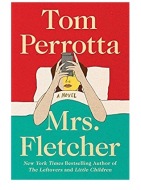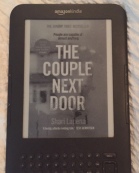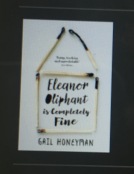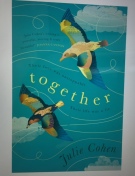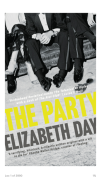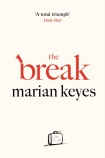A few weeks ago, an adult who should have known better made the mistake of saying to my eight-year-old son: ‘If you want to go to a good school and do well in your education, you need to read proper books, not stuff like Wimpy Kid.’ She then helpfully went on to give some examples of some ‘proper books’ that he should instead be reading: Treasure Island was one, The Wind in the Willows was another. It’s all about the language used, you see.

Sadly I wasn’t present for this conversation or I would have responded with a (probably shorter and less politely-worded) version of what I’m about to say now. It’s unlikely, but perhaps she’s reading this post, in which I will explain why I found her comment so ill-judged.
An eight-year-old boy’s enthusiasm for reading is a fragile thing. Perhaps it always has been, but it is doubly so now given the range of other entertainment options on offer. When I was eight, I could play with my 1980s toys, I could go to Fog Lane Park, or I could read a book. That was pretty much it. I guess there was also Blue Peter. How different from the life of a child in 2017 and all its digital temptations. Until this time last year my son would read reasonably willingly, but always prompted by me, and always with me, to me, or listening to me.
And then last autumn, everything changed. The catalyst for this change was, as I suspect it often is, J.K. Rowling. I never read the Harry Potter books myself, and so J.K.’s ascension to the figure of deity happened for me much later than it did for many others. In my case, it was prompted by my son’s newly discovered passion for reading fiction coinciding with Rowling’s characteristically courageous and principled stand on the current dire state of the Labour Party.
Once my son started to read Harry Potter and the Philosopher’s Stone, he didn’t look back. I stopped reading to him, and he finished it alone, followed by the other six books in the series. And then the Cursed Child, and the Beedle the Bard one and the one about Quidditch. What those of us who love reading fiction already know is that it’s like a drug. So once he’d finished reading Rowling’s entire children’s oeuvre, he moved on, in search of the same type of entertainment offered by Harry Potter, now that he knew he could do it alone. And he moved on to the other things that eight-year-old boys read, including the Wimpy Kid series. Am I confident that this reading enthusiasm will last throughout his teenage years, withstanding all modern distractions of games, phones, Youtube, Netflix and so on? No I am not. And this is the reason why a grown-up telling him that the sort of books he enjoys reading are the wrong sort to read is such a terrible idea.
Until my child was on the receiving end of this comment, I hadn’t read any of the Wimpy Kid books. I’d asked him for a brief synopsis, but he seemed weirdly unable to summarise the plot. Since nothing gets me crosser than an accusation of a book not being a ‘proper book’, I dipped in, and I immediately saw why he found it so difficult to pitch them to me, as we say in the biz. The Wimpy Kid books are books about a normal boy, in normal situations. From the short section I read, they seem quite funny. In this particular bit, Greg’s mum had decided to go to an evening class to improve her career prospects and the boys in the family were all left to fend for themselves. They thought it would be great, and they’d all get to eat unhealthy dinners and have loads of unsupervised fun. Of course it went wrong and they couldn’t cope without her. It wasn’t Anna Karenina, but I could see why a boy of his age would enjoy it. It was wittily told and illustrated and it taught an important lesson: don’t undervalue the contribution of your bossy yet excellently organised mother.
I will confess, I have never read Treasure Island and I have never read The Wind in the Willows. Yet here I am struggling on, with my state school education and my lack of knowledge of Ratty, Moley and whatever the other two are called; despite these disadvantages, I managed to scrape together a first class degree and a good job in publishing. I suspect the reason why I never read either of those books in the first place is the same reason why the Wimpy Kid books are so popular. It’s all about what you can relate to. I’m not interested in pirates, and I’m not interested in woodland animals. I’m sure that they are both brilliant books with much more to offer and more universal themes at their heart, but unfortunately the fact that they appeared, on the surface, to be about pirates and woodland animals meant that I never read them. For the same reason, I never read The Life of Pi as an adult. Friends tell me it is excellent, but I am just never going to read a book about someone stuck on a boat with a tiger.
Books that draw scorn from literary snobs tend have three things in common: 1. Massive sales 2. Accessibility and 3. Relate-ability, for want of a better word. The final point is so important. It is what fuelled the so-called ‘chick-lit boom’ of the late nineties and early noughties. These were books about everyday women’s problems, that everyday women could empathise with, and read with ease and pleasure. They were seen as not being sufficiently ‘deep’ and some of their covers were pink and so derision was heaped upon them by people who never actually bothered to read them. The same factor is at play in the current popularity of domestic psychological suspense. Of course, not all of us have lying murdering psychopaths for husbands, but the set ups in these novels are close enough to our world, our relationships, our families, that emotionally, we get it. With one small twist of fate, this could be you, these books are saying – and that is what makes the psychological thriller so compelling.
There are some people who will always believe that a book needs to be difficult to read in order to be good. Plus ca change etc… these people are wrong, as I have written about in different contexts and at length elsewhere. But if you’re going to start telling people what they should and shouldn’t be reading, start with a 40-year-old woman who can argue her case on the internet, and leave a young boy, who has only just discovered a love of reading that needs to be nurtured, alone.

